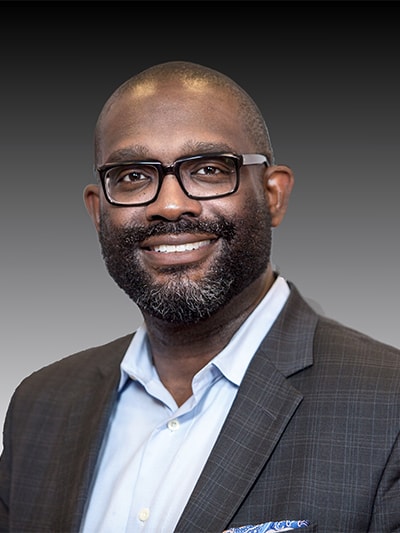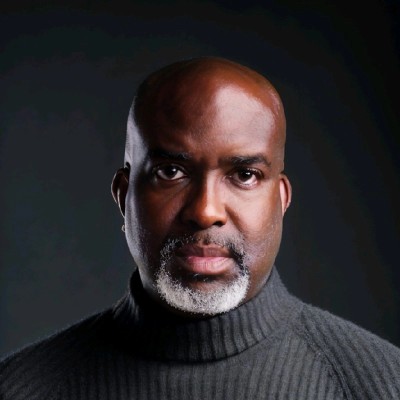Across the country, many cities are hot. And not the cozy kind of warmth. No, these cities are stiflingly — dangerously — hot.
July 2024 had the warmest global surface temperature on record, and extreme heat is likely to continue and increase because of climate change.
But other factors also can contribute to extreme heat. Because structures like buildings, roads and other infrastructure absorb and reemit the sun’s heat more than natural landscapes do, they create human-made pockets known as “heat islands,” according to the Environmental Protection Agency.

These heat islands often are in urban, marginalized and poor communities, created by policy and design. And because extreme heat causes a number of health and social issues — it is the leading weather-related killer in the United States, according to the EPA — heat is also a justice issue.
“This is a fundamental matter of equity,” said the Rev. William H. Lamar IV, the pastor of Metropolitan African Methodist Episcopal Church in Washington, D.C. “Let’s stop designing in ways that make our communities hotter and sicker, and let’s design in ways where we can all flourish together.”
Metropolitan is working with communities to lower temperatures, control flooding, provide shade and carry out other efforts to reduce the human toll of heat islands.
It’s the only church participating in the Smart Surfaces Coalition, a nonprofit that has brought together 40 national and international entities “to enable cities to thrive despite climate threats, decrease urban heat as the world warms, save cities billions of dollars, reduce flooding/mold risk, slow global warming, and strengthen city livability, resilience and equity.”
Coalition partners include a variety of leading organizations, such as the National League of Cities, the American Public Health Association and Habitat for Humanity.
So how does a church fit into the mix? Pretty seamlessly, because the coalition’s focus, in part, is helping the people affected by these environmental changes.
“Human need should drive ministry,” Lamar said. “Our ministry should be imagined around how human beings can go from where we are to shared flourishing and abundance.”
Environmental threats as a social justice issue
About 1,300 people die in the U.S. annually from exposure to extreme heat. In addition to causing potentially deadly illnesses such as heat exhaustion and heat stroke, extreme heat can contribute to deaths from heart attacks, strokes and other cardiovascular diseases, according to EPA.
Do your constituents or congregants live in “heat islands”?

In addition, heat can increase violence and can create or compound educational disparities, said Charles Ellison, senior fellow for the Smart Surfaces Coalition, who works on advocacy and communications.
“We have put Black people, brown people, Native people, poor white people in spaces where there is not adequate tree cover, where the roads are dark and impervious. We put them in low-lying areas prone to flooding and mold, and we do this as a means of public policy,” Lamar said.
Lamar pointed to the discriminatory practice of redlining, for example, which is now illegal but systematically denied financial services like mortgages and loans to residents of certain areas because of their race or ethnicity.
And these policy decisions were made over generations, said the Rev. Dr. Jon Robinson, the senior program director at Metropolitan, who manages grant funds for the church’s work with the coalition.
Who are the people most threatened by increasing heat or flooding in your context?

“We didn’t just get to a point where neighborhoods lack infrastructure. Flint didn’t just happen to have lead-filled, poisoned pipe. That was a public policy decision,” Robinson said. “It’s not an accident that there are no grocery stores with fresh produce in these neighborhoods. ... The U.S. highway system devastated Black communities — also not accidental,” he said.
“So in the same way that public policy targeted those communities and denied investment, we’re saying public policy needs to target those communities with investment and with infrastructure and with resources,” Robinson said.
Finding and funding local solutions
Metropolitan has received two grants totaling about $1.4 million over three years from fellow coalition partners Waverley Street Foundation and The JPB Foundation, Robinson said.
The church then works with other churches and community-based organizations in six cities — San Antonio, Dallas, New Orleans, Jacksonville, Atlanta and Charlotte — to fund their climate mitigation projects.
The church also works with faith-based coalition partner The Oikos Institute for Social Impact, which is readministering about $400,000 of those funds to churches in four of the cities, said Robinson, who serves as vice chair of the Oikos board. Twenty churches will each receive $20,000 grants.
It’s been a fruitful partnership.
Are you better equipped to address issues on the ground or through policy change? Could you do both?

Oikos works with African American congregations to leverage their assets to make a difference in marginalized communities, said the Rev. Dr. Reggie Blount, the institute’s co-founder and executive director. He also is a professor at Garrett-Evangelical Theological Seminary.
The institute operates a leadership development technical training process in a cohort model in the regions of Atlanta, Chicago, Dallas, Nashville, North Carolina, and Washington, D.C., with 12 to 15 churches connected to each cohort.
“We help them to kind of reclaim and reimagine their own sense of missional identity and to recognize that they have more available to them than what’s in their collection plate,” he said. Oikos joined the coalition to be a partner with Metropolitan in giving grants to congregations to engage in smart surfaces/climate mitigation projects.
The coalition doesn’t mandate specific solutions or projects. But it does work to educate and mobilize policymakers and the public on the issues and on adopting “smart surfaces,” which can include the following technology:
- Reflective (cool) roofs and pavements, which are light-colored and engineered to reflect sunlight
- Porous and permeable pavements, like porous concrete and porous grid pavers with turf or gravel, which allow rain to soak through and can lower temperatures through evapotranspiration
- “Green” roofs, which absorb rainwater, improve air quality and reduce heat absorption
- Low- and zero-carbon concrete
- Trees, which provide cooling shade, turn carbon dioxide into oxygen and reduce floods
- Solar surfaces, which help convert sunlight into renewable energy and provide shade
- Rain gardens and bioswales, which collect and filter runoff, promote biodiversity and feature vegetation to cool the surrounding environment
- Urban meadows for native plants, which improve stormwater management

The coalition also seeks to meet with policymakers to convince them to address the issue of heat islands for their constituents, Ellison said. The coalition estimates that smart surfaces can cool cities by 5 degrees Fahrenheit, reduce floods and mold, and provide $10 in benefits and cost savings for every $1 spent.
To that end, the coalition announced last year that the mayors of Atlanta; Boston; Columbia, South Carolina; Dallas; and New Orleans also had committed to a multiyear project to “cool cities and advance environmental justice.” They join the city of Baltimore, which already is involved.
How program partners and grantees are helping

“We don’t just live where we live by accident. We live where we live because it’s affordable based on what we have access to,” said Dr. Angela M. Chalk, the founder and executive director of Healthy Community Services.
The nonprofit, which is a grantee working with Robinson at Metropolitan, focuses on New Orleans’ flood-prone 7th Ward, many parts of which are at or below sea level. Seventy-eight percent of its residents are Black, and 63% live at or below the poverty line.
New Orleans was devastated by Hurricane Katrina in 2005 and continues to be susceptible to climate threats; the state of Louisiana ranks third-most susceptible to hurricanes (following Florida and Texas). So Chalk’s organization seeks to help educate community residents on climate and coastal resiliency and offer community engagement and outreach.
In recent years, for instance, a blighted portion of a highway in New Orleans had been abandoned, Chalk said. Because the space was covered in 300 square feet of 24-inch-thick concrete, it would radiate heat even after sundown, she said. Plus, gallons of water would run off the concrete when it rained, resulting in street flooding.
But when a neighbor acquired the property at a city auction, a $50,000 grant from Metropolitan changed things. With those grant funds, Healthy Community Services was able to remove the thick concrete and install a bioswale, a linear channel that moves and filters water.

Today, that bioswale manages 6,000 gallons of stormwater — soaking it up like a big sponge and alleviating flooding, Chalk said. Her organization also is using native plants like Louisiana irises and salvia to manage the water and create an ecosystem for butterflies and bees.
But pollinators aren’t the only ones visiting the revitalized property. The updates offer many benefits to residents, who can enjoy the space for things like community events, Chalk said, adding that her organization also is leveraging grant funds to create another space planned as a quiet, shaded garden for mental wellness.
In addition to changing harmful policies, Metropolitan wants to support local organizations, such as Healthy Community Services, that already are working on the ground. And they hope to connect groups in all the cities in which they work to learn and share with each other.
“What we are doing is we are empowering people who are doing the work,” said Lamar, noting that local organizations often find it difficult to win grant funds given at the national level, but they have knowledge and know-how. Large, wealthy nonprofits tend to get the philanthropic largesse, while small, scrappy folks don’t have the resources to grow and take their work to scale, he said.
“We’re not taking the knowledge to the people to fix the problems. They already know how to fix them. We are resourcing them,” he said.
The power of faith and community partnerships
Robinson, Metropolitan’s grant fund manager, formerly worked as a youth pastor. Today, he tends to view Scripture through the lens of justice, such as in the question posed in Micah 6:8, “What does the Lord require of you but to do justice and to love mercy and to walk humbly with your God?” he said.
Now, some might say the church’s efforts help bring justice to people on the ground.
“What I wanted to do was to see if we could find organizations who are on the ground in these six cities and put money in their hands so that they can fund the kind of innovation that’s going to work in their community,” said Robinson, who also has experience as a nonprofit founder.
For example, Metropolitan works with LISC Jacksonville, an office of the Local Initiatives Support Corporation, which similarly serves as an intermediary to provide regrants to local organizations.
In 2024, at about the midpoint of its funding term, LISC Jacksonville has distributed about $50,000 and created a small-grants program that helps neighborhood associations spread the word about the importance of smart surfaces and green infrastructure in the Florida city.
Who is working to mitigate the effects of climate change near you? How might your organization join their work?

Like New Orleans, Jacksonville experiences tropical storms. The city also deals with pollution of the Ribault River and persistent flooding of homes along the river, said Kristopher Smith, a community development program officer at LISC Jacksonville.
The office also has taken more than 400 residents on boat rides to see the neighborhoods and discuss the importance of reducing flooding through green infrastructure approaches. Today, early signs show these community efforts have activated residents and raised their consciousness, Smith said.
Plus, with Smart Surfaces connections, LISC Jacksonville worked with the Florida Public Health Association to organize focus groups on extreme heat. These discussions led to a set of climate recommendations shared with the city, such as the need for more cooling centers and better shade where people gather, Smith said.
The organization’s connection with Metropolitan also has an impact.
“Because Jacksonville has a strong faith community, and knowing that there are models out there that other church leaders and other church institutions are taking action around, this gives us a path to follow and build around,” Smith said.
Chalk also said faith figures into her community efforts, explaining that community advocacy is her “role and responsibility” as a Christian woman.
“If we call ourselves Christians and we believe in working as Christians, that’s what we’re supposed to do. Not just go to church on Sunday and say, ‘I’ve done my good deeds,’” she said.
After all, churches have a history with community work — even if they’re not always the go-to partners.
“There are a number of potential nonprofit partners or funders who get jittery around working with churches,” Blount said. This might happen because of a commitment to the separation of church and state, he said, or the belief that churches are only focused on increasing membership and evangelizing.
Are there abandoned places in your neighborhood that your organization could help reclaim and reuse?
“In reality, many of our congregations have been anchor institutions within their community,” Blount said, noting that congregations have provided services such as food pantries, child care and scholarships — services that have nothing to do with whether or not the community agrees with the church’s faith.
“We believe that if we can help folks understand the power of collaboration, that if we can get these various entities within these communities working together, that they might be able to do more together than they could just trying to do stuff individually or siloed,” he said.
Plus, helping empower and educate local communities can serve as acts of discipleship.
“The closer we get to the work that sets human beings free, that allows them to thrive, that allows us to thrive together, the closer we get to the work of God. Because that is where God is found,” Lamar said.
“We are responsible for caring for our God’s creation,” Blount said. “Where we find ourselves in this whole climate issue is really the result of not being good stewards of what God entrusted to us. And we have a responsibility to get back on track.”
What community work have faith communities been known for in your context?
Questions to consider
- Do your constituents or congregants live in “heat islands”?
- Who are the people most threatened by increasing heat or flooding in your context?
- Are you better equipped to address issues on the ground or through policy change? Could you do both?
- Who is working to mitigate the effects of climate change near you? How might your organization join their work?
- Are there abandoned places in your neighborhood that your organization could help reclaim and reuse?
- What community work have faith communities been known for in your context?





















